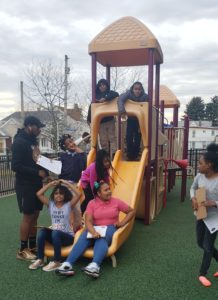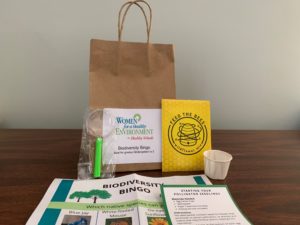Summer in Review: Transitioning to Virtual Learning!
For the majority of this school year, we had the privilege of seeing the bright, smiling faces of students across Allegheny County on a weekly basis. We were able to travel to Homewood, Braddock, Wilkinsburg, and Garfield to deliver in-person curriculum to eager to learn youth. The sudden closure of schools in March, while necessary, left us scrambling not only for ways to continue to teach our students, but also to support them in the many challenges that stemmed from this pandemic.

Our immediate solutions began with compiling resources for both families and educators. We recognized that for many of our youth and their families, the closure of schools would be not just a loss of education, but also food, healthcare, support, and socialization. To assist in combatting this, we composed a list of food pick-up locations, at-home educational activities, and health and wellness resources. We adapted some of our own worksheets and curriculum to be virtually accessible. As educators ourselves, the switch from in-person to virtual learning seemed daunting. Our resource list for educators included platforms for virtual learning, pre-existing virtual activities, professional development opportunities, and articles. Both of these resource guides can be accessed here: https://drive.google.com/drive/u/0/folders/1ZaL_jXDG7Sb_PWCfWZ2aX7UqjIrM6RNf
The barriers of virtual learning at first seemed intimidating. We pride ourselves in providing engaging curriculum, and we struggled to brainstorm ways to actively connect with our youth behind computer screens. Much of our curriculum focused on hands-on, problem-based learning – we loved being able to build, discuss, and grow with our students. Many of our activities involved group work and the sharing of materials, and these components seemed impossible in a virtual space. Not only were our students not able to share materials, but many of our students did not have access to the materials needed for our lessons. The realization of this barrier led us to the development of our curriculum kits. We created four different curriculum kits with each kit providing instructions and necessary materials for at-home learning. Over the past couple months, these kits have been utilized by both individual families and participants in community organizations. Some students have completed the activities on their own, while other groups of students have learned with us in real time over video calls. Teaching in real time allows us to have meaningful discussions with our youth even while socially distant.

We have learned through this process while that virtual learning can have its setbacks, it also has its perks. Commuting to different neighborhoods in Allegheny County was once an important factoring in determining where to deliver our curriculum. Now more than ever, we’ve been able to connect with students from communities outside of our typical traveling. Rather than anxiously packing enough materials for an in-person lesson, we feel relief in knowing that each of our virtual students has the exact amount of materials needed.

The transition to virtual teaching has allowed us to re-think the way we formulate lesson plans and become creative in the delivery of curriculum. We started to film videos to pair with our curriculum kits to better serve as an at-home educational resource. We incorporated icebreakers that encourage physical movement into virtual spaces. We have utilized a variety of learning platforms, such as Kahoot and Padlet, to enhance the virtual learning experience. While we are anxious to return to routine in-person teaching when it’s safe to do so, we feel confident in our ability to provide virtual activities and lessons to the communities we serve.
This post was authored by our KEYS Americorps member, Evelyn Garon, as part of her 2019-2020 Service Year.
